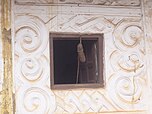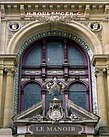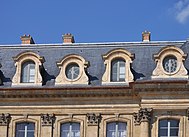Window
**Window Etymology and History:**
– The word ‘window’ originates from Old Norse and was first recorded in the 13th century.
– Initially, windows referred to unglazed holes in roofs, with Romans being the first to use glass for windows around 100 AD.
– Glass windows became common in England in the early 17th century, evolving from paper windows used in ancient China, Korea, and Japan.
– Modern-style floor-to-ceiling windows became possible after industrial advancements.
**Window Technologies:**
– Early windows were covered with animal hide or wood, with techniques developed for producing thinner glass panes.
– Romans used glass for windows around 100 AD, and mullioned glass windows were popular among the well-to-do in Europe.
– Modern windows are typically filled with glass or transparent plastic, showcasing advancements in window technology.
**Window Types and Designs:**
– Various window types include cross windows, eyebrow windows, fixed windows, hexagonal windows, single-hung windows, and more.
– Different architectural styles have influenced window designs, leading to trends in window shapes and overall window architecture evolution.
– Window styles like casement, picture, multi-lite, emergency exit/egress, stained glass, French, and others offer diverse options for functionality and aesthetics.
**Window Construction and Materials:**
– Grids or muntins separate larger windows into smaller panes, with modern frames made of PVC, fiberglass, aluminum with thermal breaks, or composites.
– Glazing advancements like low-emissivity coatings and filling with gases like argon improve thermal resistance in double and triple-pane windows.
– Windows feature movable coverings like blinds for light control and privacy, addressing issues related to excessive natural light, glare, and heat gain.
**Window Energy Efficiency and Innovation:**
– Passive solar windows maximize energy efficiency and comfort, with some windows designed to convert sunlight to electricity.
– Properly positioned windows can serve as a building’s primary heating system, showcasing the impact of the sun on window design.
– Research on solar energy applications through windows, energy performance evaluations in window retrofit, and growth projections in the vinyl windows market highlight ongoing innovations in window technology.
This article contains content that is written like an advertisement. (March 2024) |
A window is an opening in a wall, door, roof, or vehicle that allows the exchange of light and may also allow the passage of sound and sometimes air. Modern windows are usually glazed or covered in some other transparent or translucent material, a sash set in a frame in the opening; the sash and frame are also referred to as a window. Many glazed windows may be opened, to allow ventilation, or closed, to exclude inclement weather. Windows may have a latch or similar mechanism to lock the window shut or to hold it open by various amounts.
In addition to this, many modern day windows may have a window screen or mesh, often made of aluminum or fibreglass, to keep bugs out when the window is opened. Windows are primarily designed to facilitate a vital connection with the outdoors, offering those within the confines of the building visual access to the everchanging events occurring outside. The provision of this connection serves as an integral safeguard for the health and well-being of those inhabiting buildings, lest they experience the detrimental effects of enclosed buildings devoid of windows. Among the myriad criteria for the design of windows, several pivotal criteria have emerged in daylight standards: location, time, weather, nature, and people. Of these criteria, windows that are designed to provide views of nature are considered to be the most important by people.
Types include the eyebrow window, fixed windows, hexagonal windows, single-hung, and double-hung sash windows, horizontal sliding sash windows, casement windows, awning windows, hopper windows, tilt, and slide windows (often door-sized), tilt and turn windows, transom windows, sidelight windows, jalousie or louvered windows, clerestory windows, lancet windows, skylights, roof windows, roof lanterns, bay windows, oriel windows, thermal, or Diocletian, windows, picture windows, Rose windows, emergency exit windows, stained glass windows, French windows, panel windows, double/triple-paned windows, and witch windows.
The Romans were the first known to use glass for windows, a technology likely first produced in Roman Egypt, in Alexandria c. 100 AD. Presentations of windows can be seen in ancient Egyptian wall art and sculptures from Assyria. Paper windows were economical and widely used in ancient China, Korea, and Japan. In England, glass became common in the windows of ordinary homes only in the early 17th century whereas windows made up of panes of flattened animal horn were used as early as the 14th century. In the 19th century American west, greased paper windows came to be used by pioneering settlers. Modern-style floor-to-ceiling windows became possible only after the industrial plate glass making processes were fully perfected.






